| Newsletter - 2005 Archive |

|
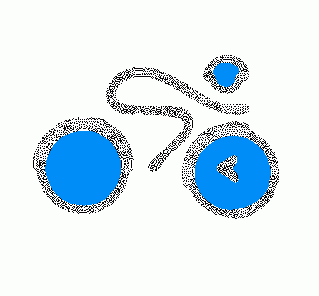
|
Cycling Club |
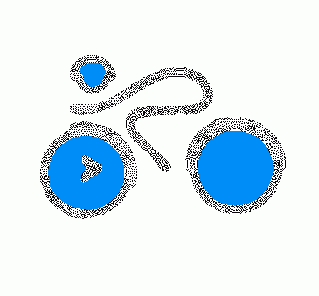
|

|
| Newsletter - 2005 Archive |

|

|
Cycling Club |

|

|
Next--->
|
Rando Lights Blinkies Blinkies are NOT the best rear light. Blinkies have such a narrow field of view that they are virtually unidirectional. Their blink is not that powerful either. In constant-on mode, blinkies are absolutely pathetic and nearly impossible for motorists to distinguish from ambient light. The reason blinkies are so ubiquitous is not because they are effective but because they are CHEAP. A xenon strobe is better than a blinky. A xenon strobe has a much wider field of view than a blinky and a xenon strobe is brighter than a blinky. Unfortunately, xenon strobes are not that easy to find (Night-Sun sells one made by the Visibility Systems Company). However, no one is using xenon strobes for rando rides. Wheel-sucking a blinky is annoying enough. Drafting behind the stellar lightbursts of a xenon strobe could induce epileptic seizures. A reasonable compromise is to install at least two good-quality (rear) red blinkies on your rando bike. I prefer the bigger rectangular blinkies that take two AA batteries (as opposed to the pipsqueeky little blinkies that take those itty-bitty AAA batteries). The AA batteries last longer (they are bigger) and AA lithium batteries can be substituted for the pedestrian alkaline AA’s that commoners use in their blinkies. The lithium batteries contain dilithium crystals (unfortunately produced by forced labor at dilithium mines on Dozaria, but what can you do?). The dilithium makes the battery lighter and the blinky brighter, longer lasting and better-performing at low temperatures. The visibility of a blinky depends on the quality of its electronic components and diodes and also on the presence of an adequate diode reflector. Most blinkies are crappy. The blinkies that the Mountain Equipment Co-op sells do not even have a reflector. The Vista-Light blinky has a reflector and is much more visible. 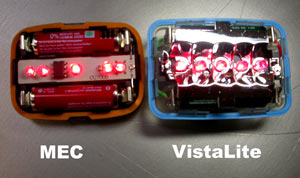 Blinkies can fail (that’s why you should install two). The intense vibration of Whatcom County sealcoat can make a blinky dysfunctional. Try to mount your blinky with the rubber shims that come with it or cut up an inner tube to use as a shim on your blinky-bracket. The rubber acts as a vibration isolator. Make sure you mount the blinky on a solid part of the bike (like the seatpost or the back of a rack). Blinkies mounted on your person are useless (because of the unidirectionality of blinkies). FRONT LIGHTS Dynamos You are the dynamo. Dynamo lights are not dynamos. They are not bright enough. Flashlight-Type Lights Actual flashlights were once de rigueur amongst hardass randonneurs in Europe. Those flashlights had inappropriate beam-reflectors and the batteries would rapidly discharge due to vibration. Lately some randonneurs have been using Cat-Eye flashlights designed for bicycles (but not for randonneuring). At the last PBP I did, Cat-Eye flashlights littered the road all the way to the first checkpoint. The vibration made them fall off their mounts. I am guilty of using Cat-Eye flashlights for two PBP’s. They were cheap, light and everyone else seemed to have shitty lights too. It was so manly speeding through the night in a giant pack where no one could see a bloody thing. Everyone thought the French guys at the front must have had the road memorized. During one PBP it was me and a Belgian guy (with our Cat-Eyes) at the front of a fast group (of about 100) in the middle of the night. I thought the French guys behind us must have had the route memorized. I could barely see the road, let alone the direction signs. We were at least 20 km off the route before the French guys realized we were not headed towards Brest. Luckily it was too dark to properly assess blame and no one had a bright enough light to identify anyone else. The moral of that story is that 1.5 watt and 3 watt light bulbs are completely useless for randonneuring. You need at least 10 watts and preferably 15 watts (or an HID light). HID Lights High Intensity Discharge, metal halide lights are the most efficient bicycle lights. They are brighter than hell. HID’s may not the perfect thing for randonneuring though. HID’s produce a bluish light that tends to obscure broken glass (but they light up everything else like dynamite!) and they tend to cost about $800. Another thing to consider is that HID’s are not instant-on. They take 20-30 seconds to warm up to full brightness. However, once the HID light is at full brightness stupid motorists will actually turn down their high-beams for a change (HID’s are almost as bright as a car headlight)! If HID’s were mandatory for randonneuring (which they probably should be) I would rush right out and buy one tomorrow. LED’s LED front lights (aka front blinkies that stay on) are not bright enough. The Luxeon V LED is sort-of bright but has an unacceptably high price and short life (it runs too hot). Don’t expect this technology to improve anytime soon. So LED front lights are no good for "seeing" but they are ok for "being seen". I have two Planet Bike Beamer 3 white LED lights on each of my bikes. In blinking mode they frighten cars away. The Beamer can also be used as a flashlight. Along with the Beamers and actual headlights I have some yellow Cat-Eye blinkies on the front of a couple of bikes. 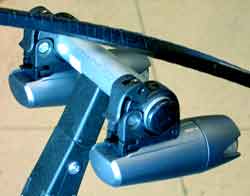 Normal Lights Most non-crackpot cyclists are using one form or another of MR-11 or MR-16 halogen front lights (MR-16’s are better because they have a bigger reflector). MR stands for Mirrored Reflector and they are the same type of lights used on the track-lighting in your kitchen. MR lights are very suitable for cycling because of their precise beams. MR halogen lights are not as efficient as HID lights but they are ok for randonnuering and fine for commuting. 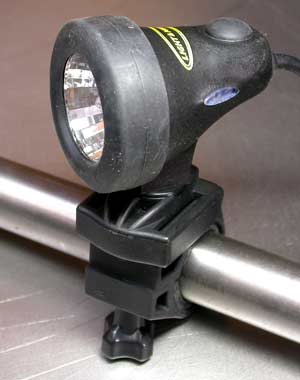 Batteries As far as rechargeable batteries are concerned, the only type of battery you really need to consider for randonneuring is the Nickel Metal Hydride (NiMH) battery. NiMH batteries are lighter and better-performing than NiCad (Nickel Cadmium) batteries for the same price. NiCad is so yesterday. Lithium ion batteries are lighter than NiMH but Li-ion batteries are much more expensive. Li-ion batteries of the same charge-carrying capacity can withstand fewer charge cycles than NiMH but Li-ion performs better in winter (real winter, not Vancouver winter). For commuting you could use sealed lead-acid rechargeable batteries but they are way too heavy for randonneuring. Reflective Stuff Put 3M Scotchlite white reflective tape on the parts of your bike that face backwards and forwards. You’ll get free illumination from car headlights. Clean the surface of the bike with 99% isopropyl alcohol (from the drug store – if you are in East Van, it’s behind the counter) then stick till you’re crazy. You can buy Scotchlite tape kits at bike shops. 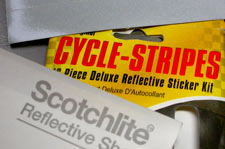 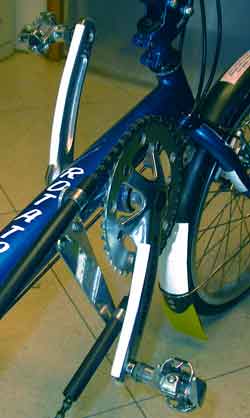 Wear a dorky reflective vest. The vest will make you attractive to other randonneurs and it will make you visible to motorists. Make sure you don’t get a cheap one with Chinese counterfeit reflective tape. The good (real) reflective tape is made by 3M, Reflexite and Avery. You can buy the 3M (reflective vest) tape at Outdoor Innovations on Main Street in Vancouver if you want to sew your own stuff. April 5, 2005 |